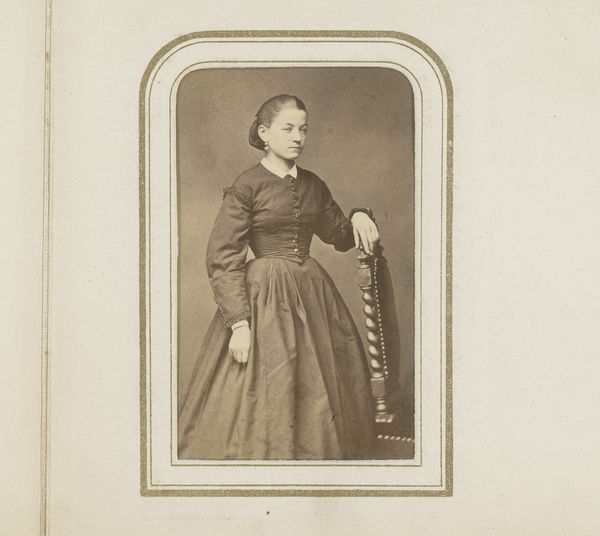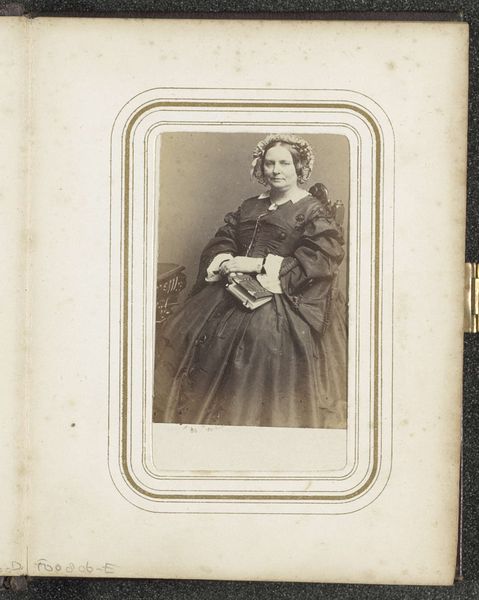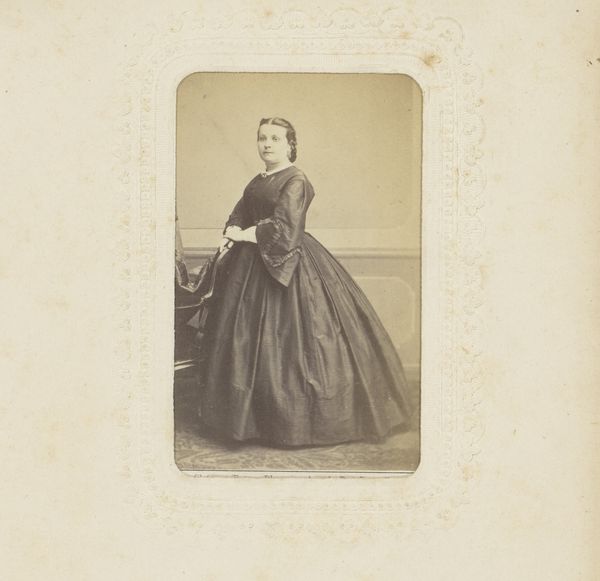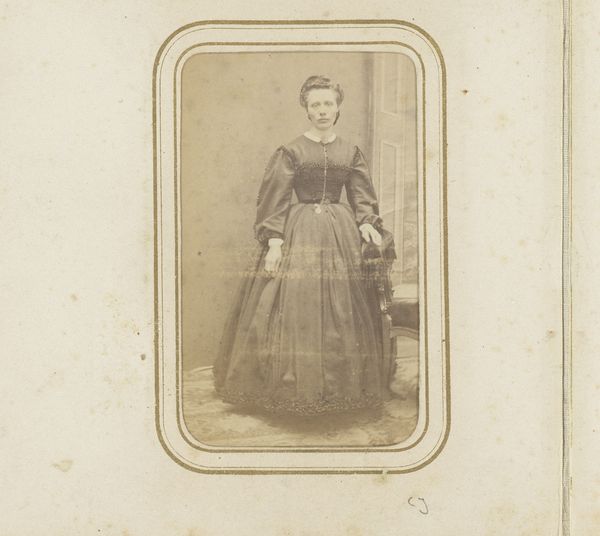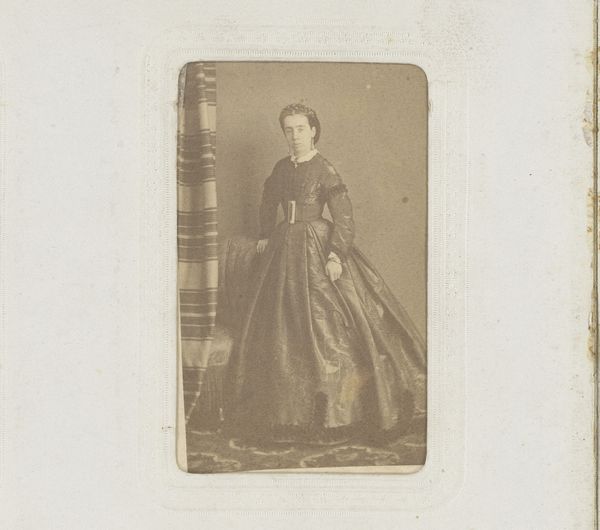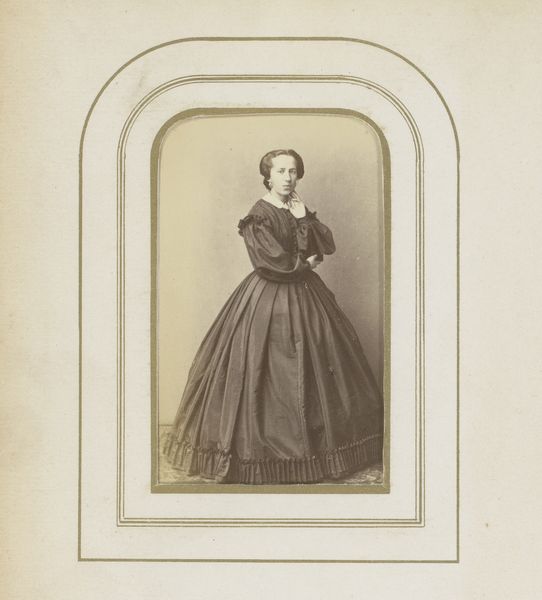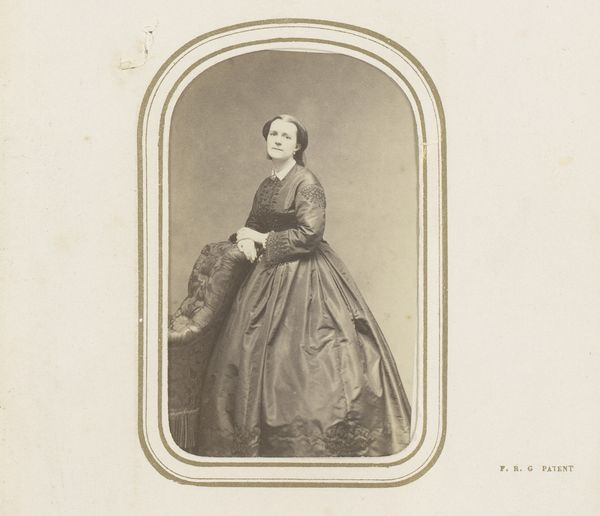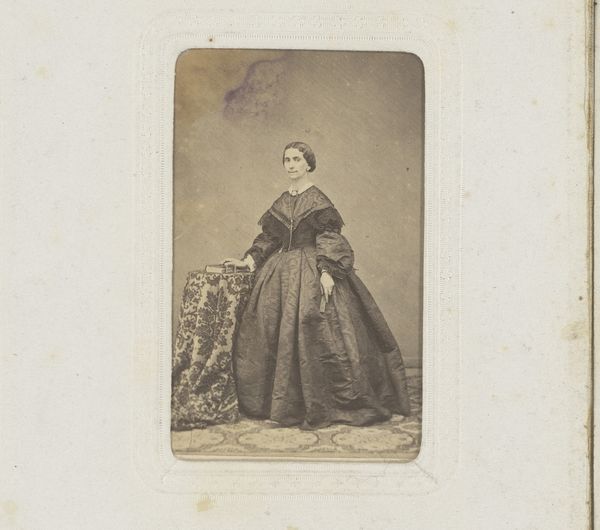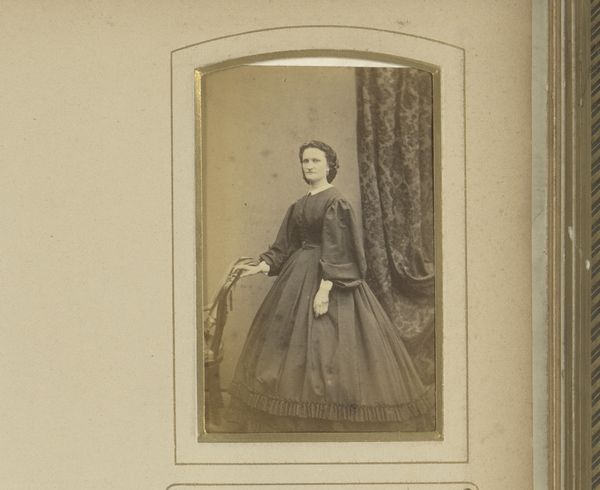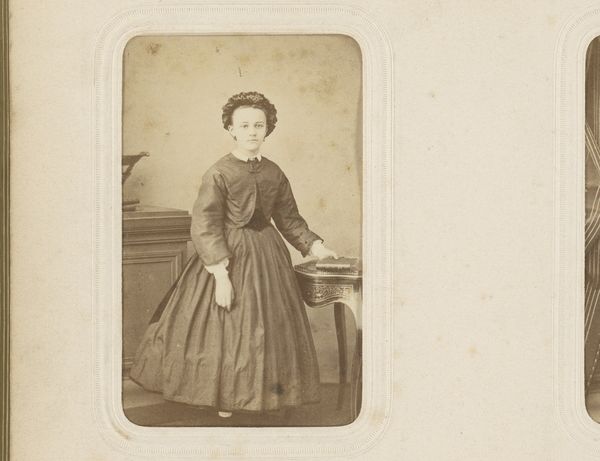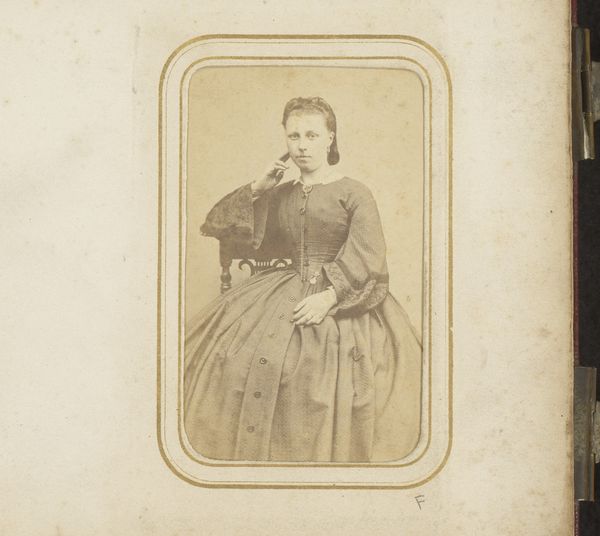
photography
#
portrait
#
16_19th-century
#
photography
#
realism
Dimensions: height 83 mm, width 51 mm
Copyright: Rijks Museum: Open Domain
Editor: Here we have "Portret van een staande vrouw," a photograph made sometime between 1857 and 1864 by Wegner & Mottu. There's a certain stillness in this portrait, almost a formal severity. What stands out to you? Curator: That "stillness" you mention is crucial. Photography in the mid-19th century was a deliberate act, a constructed performance, particularly for women. Consider the societal pressures: constrained roles, expectations of piety and domesticity. How does the woman in this portrait perform within and perhaps resist those constraints through dress, pose, and expression? Editor: I suppose her clothing speaks to a certain status, but her gaze doesn’t seem entirely subservient. Is she making a statement just by being photographed? Curator: Absolutely. Think about the context. Photography democratized portraiture, making it accessible to a wider range of people, not just the wealthy elite. For women, especially, controlling their image, participating in this visual dialogue, was a subtle act of claiming agency. How might this portrait have circulated and what meanings would it hold for her community? Editor: So it's not just about aesthetics; it's about the social and political implications of representation. Curator: Exactly. Realism as a style also plays into this, emphasizing the everyday. Consider also how photography itself was perceived – was it truthful, objective, or something else entirely? How does this perception shape how we view the sitter today? Editor: That definitely changes how I see the portrait. I was focusing on the woman, but I should be thinking about what the image itself represents. Curator: Precisely! Considering those elements brings us closer to understanding the complex role of women and image-making during this transformative period. It reveals that even in seemingly static portraits, dynamic narratives of identity and agency can unfold.
Comments
No comments
Be the first to comment and join the conversation on the ultimate creative platform.
